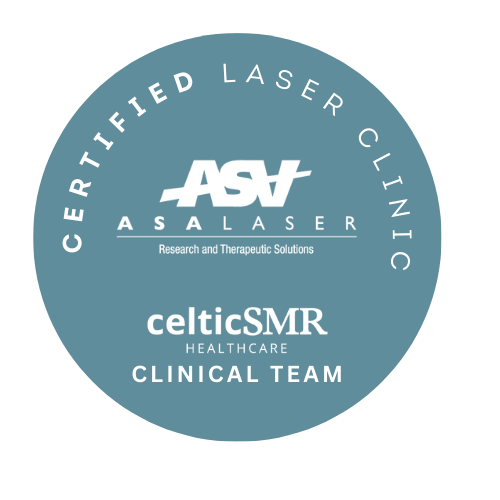If you find a lump on your foot, it might be a ganglion cyst. These types of lumps are usually benign, so there is no need to worry about more serious health problems. However, depending on where the cyst is located, it could put pressure on a nerve and cause pain or numbness. Here are some things that you should look out for.
What are ganglion cysts?
These sacs are filled with fluid and can vary in size. They can be as small as a pea or around an inch in diameter. In some cases, the lump may grow more prominent or shrink and go away entirely (although it could come back later).
What are the symptoms?
Ganglion cysts are most commonly found on the ankles and wrists, but can really pop up anywhere on the hands and feet. They often form around joints and tendons and can vary in texture depending on their location – they can be hard or springy to the touch.
These are the main symptoms:
- An obvious lump that may or may not be painful.
- An uncomfortable burning or tingling sensation if it’s pressing on a nerve.
- A constant dull ache if it’s pressing into a tendon or joint.
- Mobility issues if the joint is badly impeded.
- If you have a lump on your foot, it can be painful to wear shoes. The lump can prevent a proper fit, which can lead to blisters and other problems if it’s left untreated.
What causes ganglion cysts, and who is susceptible?
The precise reason is unknown, but there are several theories.
- Ganglion cysts are common among those who have suffered repeated joint injuries. It is believed that the trauma to the joints causes a breakdown of the tissues, which leads to the formation of small cysts. These eventually grow and merge to form one larger cyst.
- Cysts can also develop due to abnormalities in the tendons or joints. In some cases, joint tissue may protrude and fill with fluid, forming a cyst. Cysts can also be caused by genetic factors.
- The wear and tear of osteoarthritis can also lead to the formation of ganglion cysts for some people.
- Women aged 20 – 40 years are more likely to develop a ganglion cyst, but the reason for this is unknown.
How to treat a ganglion cyst
If you have a cyst, the first step is to see your podiatrist for an assessment. They will press on the cyst to see if it moves under the skin. In some cases, they may suggest an ultrasound or taking a fluid sample for further analysis. However, this is only necessary in rare cases.
If you have a cyst, there are several things you can do to make yourself more comfortable. The cyst may go away on its own, but there are ways to speed up the process.
- If you have a painless cyst, there is no need to take any action. However, it is a good idea to check in with your podiatrist to make sure the situation does not worsen.
- If you’re experiencing pain, over-the-counter medication may provide relief. Always consult with a podiatrist or pharmacist before taking anything new, to ensure it’s safe and effective for you.
- A heating pad can help to dull the pain and also increase blood circulation. This may help the fluid to eventually drain out.
- One way to prevent further irritation to a cyst is to make sure your shoes fit well and don’t rub against the affected area. You can also try using an insole or pad to cushion the cyst.
- If the problems with your cyst persist, it may be necessary to drain it. But luckily, this is a simple procedure that can be easily done.
If you have a cyst that is causing extreme pain, your best option may be to have it surgically removed. Your podiatrist can advise you on whether this is the best course of action and refer you to the right specialist. Contact us today to book an appointment for a full foot examination if you have any lumps or foot problems.
FAQs about ganglion cysts
- Are ganglion cysts dangerous?
Although ganglion cysts can sometimes cause pain or discomfort, they are not dangerous and are not cancerous.
- Can I prevent ganglion cysts from forming?
Unfortunately, you cannot prevent a ganglion cyst from forming as the cause for the development of the cyst is unknown. It is recommended that if you become aware of a cyst developing, to seek medical advice to prevent it from growing any bigger.
- Are there any complications associated with ganglion cysts?
No, ganglion cysts do not normally cause any complications, however, some cysts can cause pain, discomfort, or limit the amount of movement in that area of the body.
If you are experiencing any of the above, you can book an appointment by clicking here.
- Can a ganglion cyst come back after treatment?
It is common for a ganglion cyst to return once it has been treated, especially if the cyst was not treated properly or fully removed.
- How long does it take for a ganglion cyst to go away after treatment?
The time it takes for a cyst to go away varies depending on the location and sort of treatment, it can take anywhere from two to eight weeks to make a full recovery.
- Can I pop or drain a ganglion cyst myself?
It is recommended that you most definitely do not attempt to drain or pop a ganglion cyst, this increases your risk of infection and a recurrence of the cyst.
If you have a ganglion cyst or you’re not sure about it, it’s best to seek medical advice.


